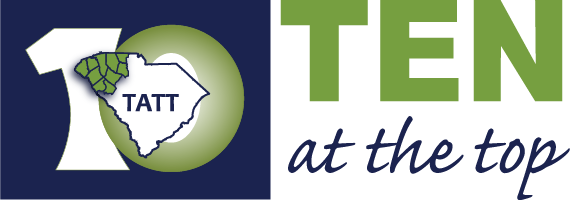
Corie Culp, AFL
Before COVID-19 was declared a pandemic, AFL’s leadership team was monitoring the situation and developing an action plan. As an international manufacturer, locations in Asia and Europe were being impacted before those impacts were ever felt at our headquarters, in Spartanburg, SC. AFL leaders across the globe were meeting daily, creating plans to protect associates while keeping operations steady. AFL focused its efforts on three strategic imperatives: keeping associates safe and healthy; maintaining operational effectiveness during the crisis; and preparing for “life after the crisis.”
AFL was (and still is) an essential business. AFL manufactures fiber optic cable, connectivity and accessories for the telecommunications industry, and provides installation services for customers and end users. By early March, the leadership team determined that the safest option for all associates was to separate essential from nonessential manufacturing associates. Both manufacturing and installation services associates continued working onsite or in the field while office and professional associates were moved to a work-from-home (WFH) status.
Within the manufacturing facilities, the first challenge addressed was minimizing the risk for associates while executing day-to-day operations. The plants were divided into zones with each zone “isolated” from another to limit potential exposure. Furthermore, associates who supported the manufacturing floor were divided into crews that were isolated and rotated so if one crew was exposed, the others could continue to operate. Everyone was subject to COVID protocols and Personal Protection Equipment (PPE) (e.g. masks, separate entrances/bathrooms/breakrooms, hand sanitizers, etc.) Areas denoting six-foot distances were marked on the floors, and janitorial service was increased for cleaning and disinfecting bathrooms, workstations and common areas.
 Office and professional personnel transitioned to a WFH status. Implementing Microsoft Teams globally in late 2019 proved to be an asset. COVID accelerated our digital transformation, providing new avenues for teams to communicate across local, national and global boundaries. Meetings once held in conference rooms became meetings held virtually and served to keep associates connected and productive.
Office and professional personnel transitioned to a WFH status. Implementing Microsoft Teams globally in late 2019 proved to be an asset. COVID accelerated our digital transformation, providing new avenues for teams to communicate across local, national and global boundaries. Meetings once held in conference rooms became meetings held virtually and served to keep associates connected and productive.
As associates were settling into new working conditions, another team was formed and tasked with determining procedures for the return to office. With seven facilities in the Spartanburg area and more than 1,000 associates, safety was the main concern. The “Back Together” team developed a highly detailed plan consisting of:
- Implementation of zones. Each building became a zone with multiple zones in most buildings. Associates were not allowed to enter another building or cross into a different zone without prior approval. In effect, zoning would help contain the spread of COVID and enable contact tracing should a breakout occur.
- Installation of temperature kiosks for daily temperature checks, touchless water and ice machines, door stoppers, faucets, soap and paper towel dispensers.
- Occupancy limits for conference rooms of varying sizes.
- Issuance of PPE (hand sanitizer, masks and a stylus for high touch points such as printers/copiers, microwaves, etc.)
- Travel restrictions aligned to domestic and international guidance

Jody Gallagher, President & CEO of AFL
Communication and transparency were key. Jody Gallagher, president and CEO of AFL sent periodic video messages to associates with business updates and words of encouragement. “Do Your Part” emails consisting of CDC recommendations and videos were and are still being sent, reinforcing the need to practice safety at work, home and when traveling. Electronic newsletters were issued for continued awareness and included video testimonials of associates who experienced COVID directly. Communication with customers was also enhanced through hosting more educational webinars, demonstrating products live on our social media channels and exhibiting at virtual trade shows.
AFL’s return-to-work started early June and ended late July. Currently, approximately 95% of AFL’s workforce has been back in the office. Special consideration has been given to associates with health implications and those who care for elderly parents. As schools began again in September, AFL supported parents working from home up to 24 hours per week to provide needed flexibility for home schooling and childcare. For manufacturing associates, AFL supported this transition by changing shift schedules to accommodate the needs of parents.
Fortunately, AFL has thrived during the pandemic. In January 2020, the FCC took a step to close the digital divide by establishing the Rural Development Opportunity Funds (RDOF) bid to fund the deployment of high-speed broadband networks in rural America, directing up to $20.4 billion over ten years to support unserved rural areas. With the shutdown across America, COVID exposed this need even more so. AFL is well-positioned to support this initiative with the fiber optic infrastructure needed.
As we approach 2021, AFL is expanding operations in the upstate and abroad. AFL’s leadership and Back Together team continues to meet periodically, watching the ebb and flow of COVID on a per region basis. With the holidays upon us, the leadership team moved office personnel back to a WFH status with a projected return date of mid-January.
In closing, it would be remiss not to recognize our associates. We wouldn’t be where we are today without the fortitude of those who stayed during the shutdown to maintain operations and the commitment of those who worked from home. On behalf of AFL, we want to thank them for their dedication to AFL and the AFL family!
